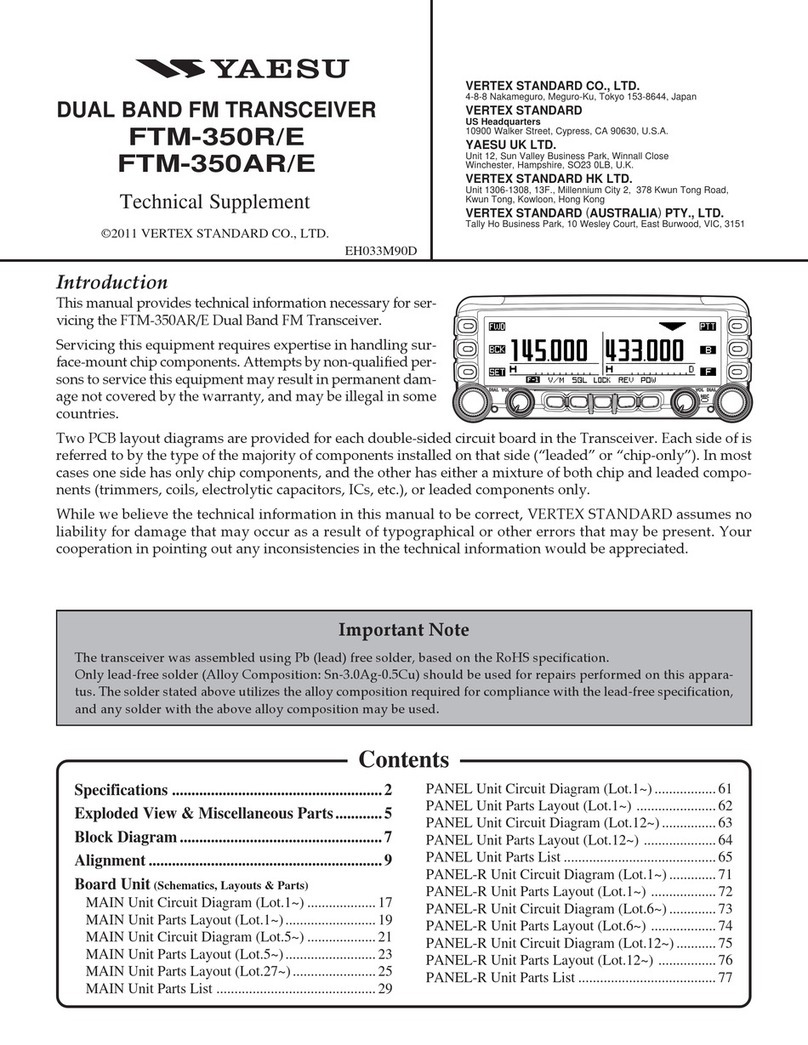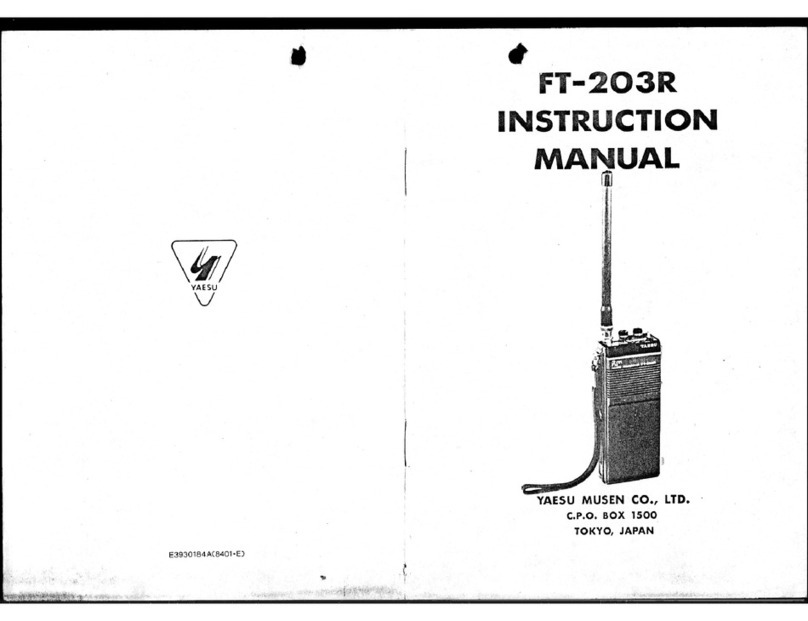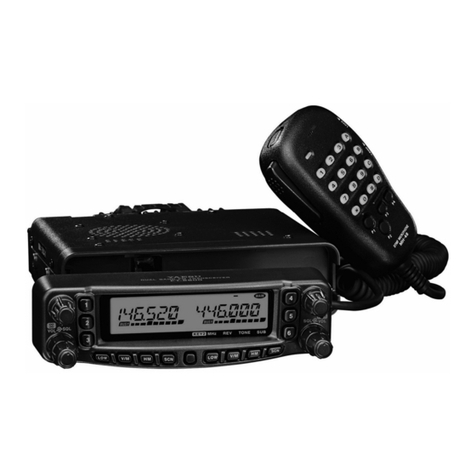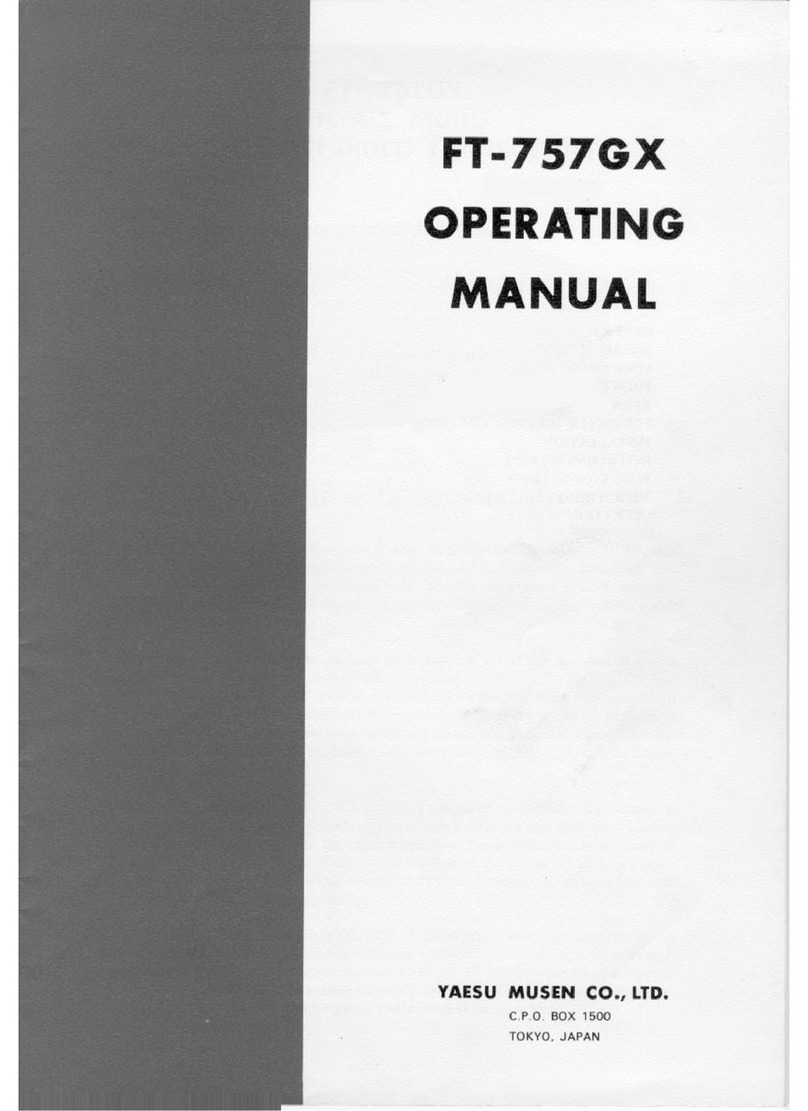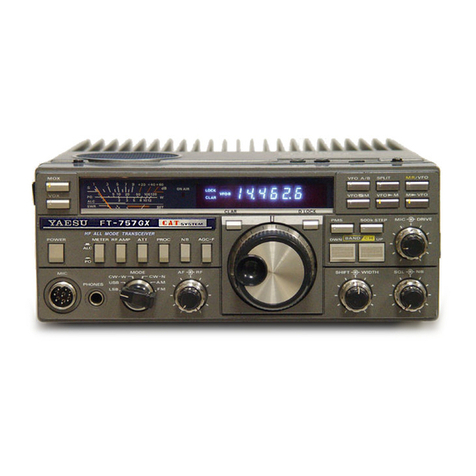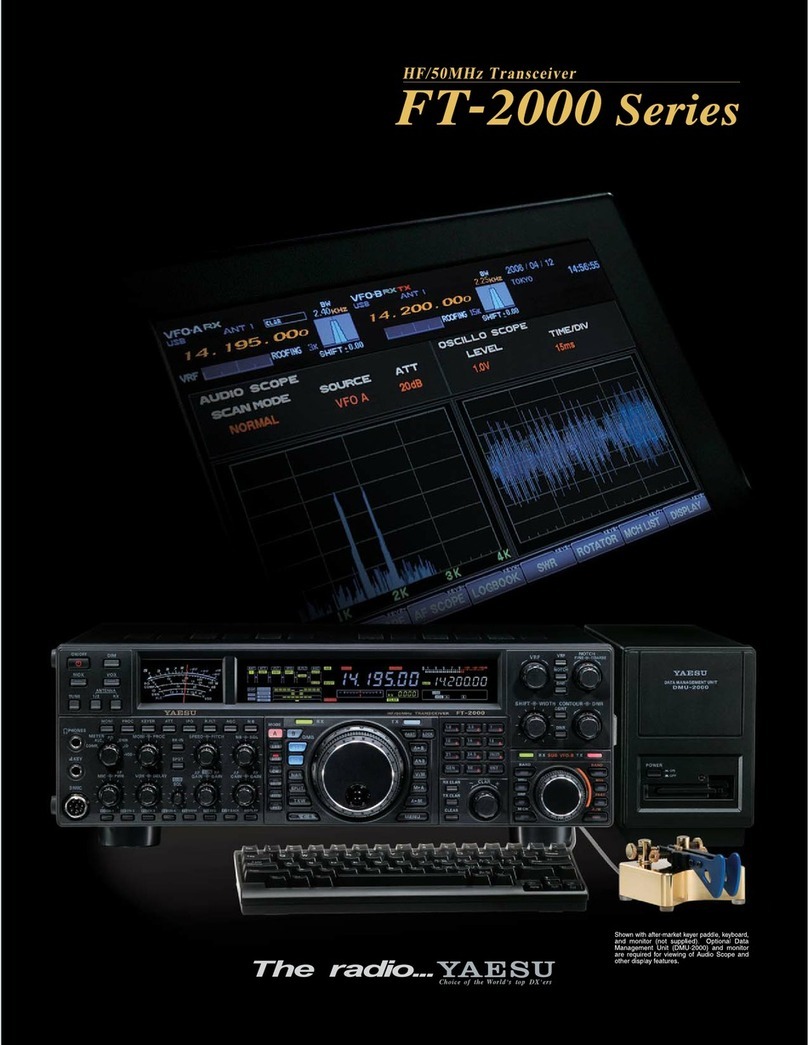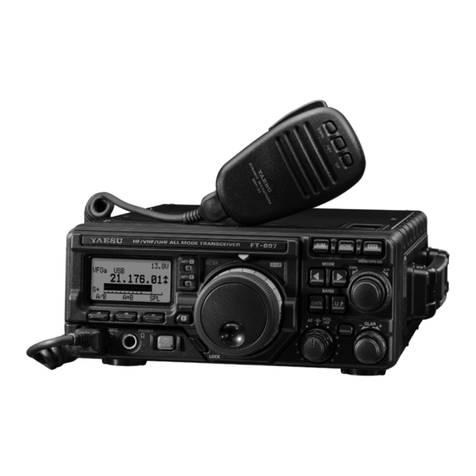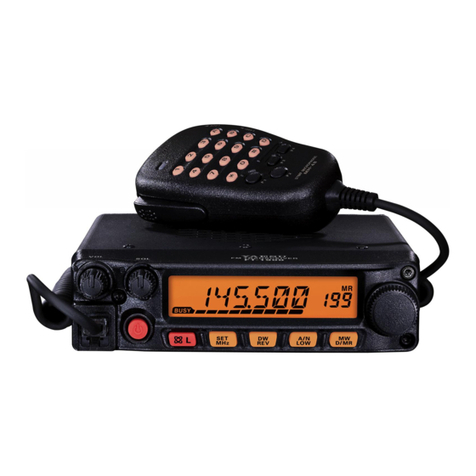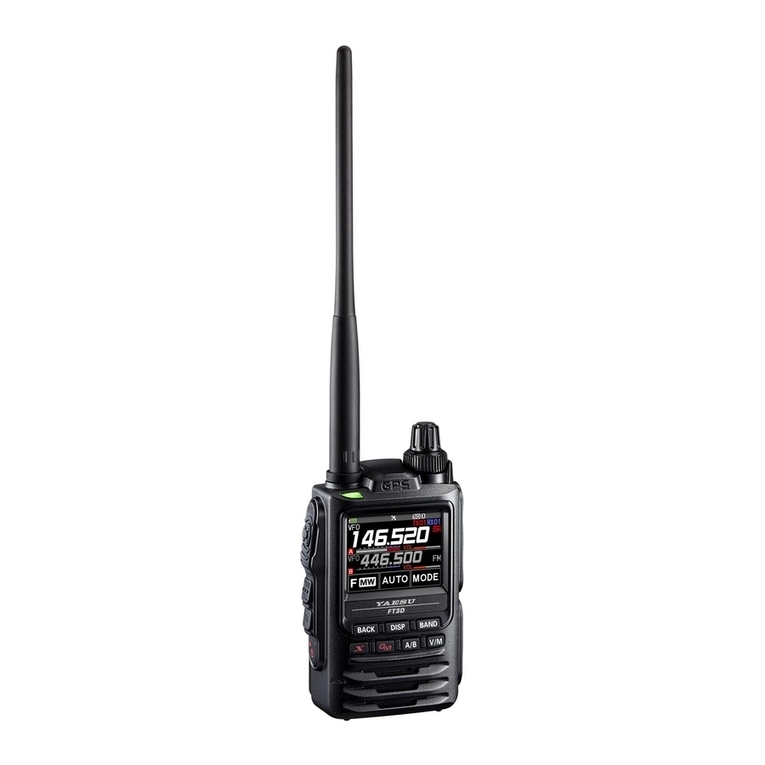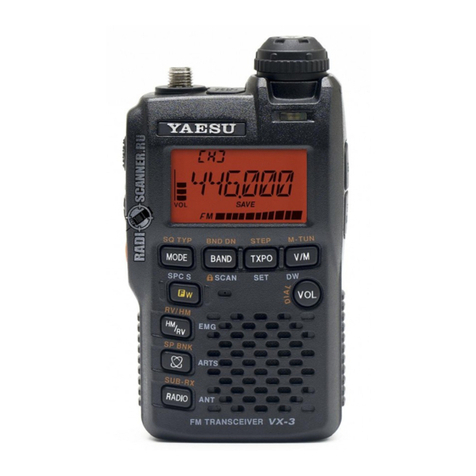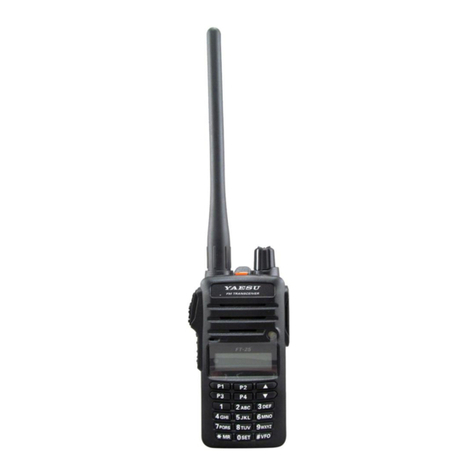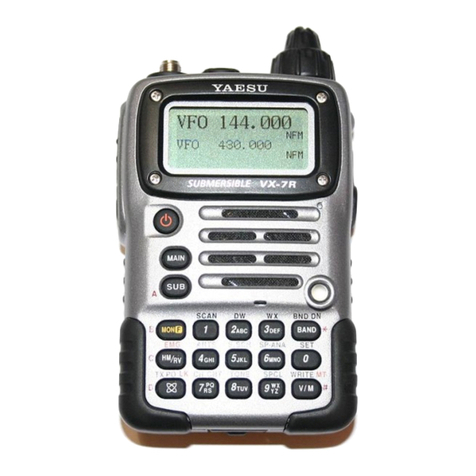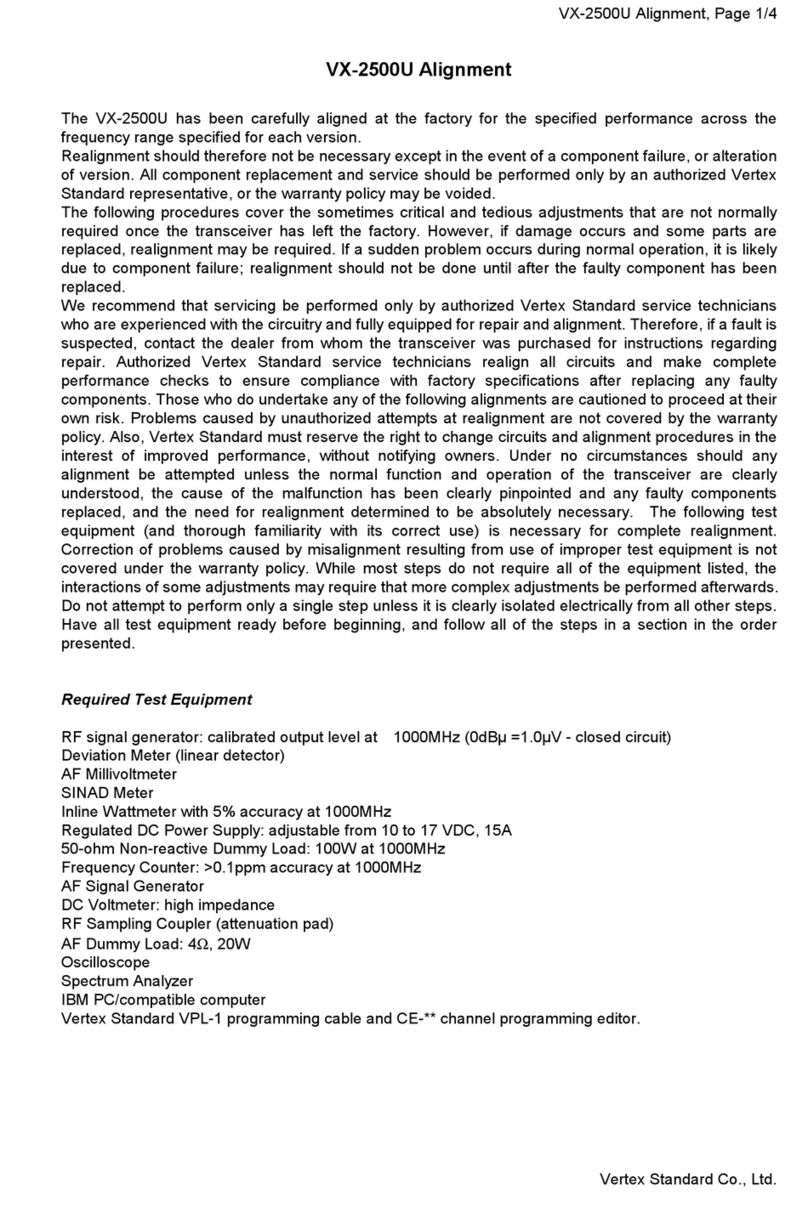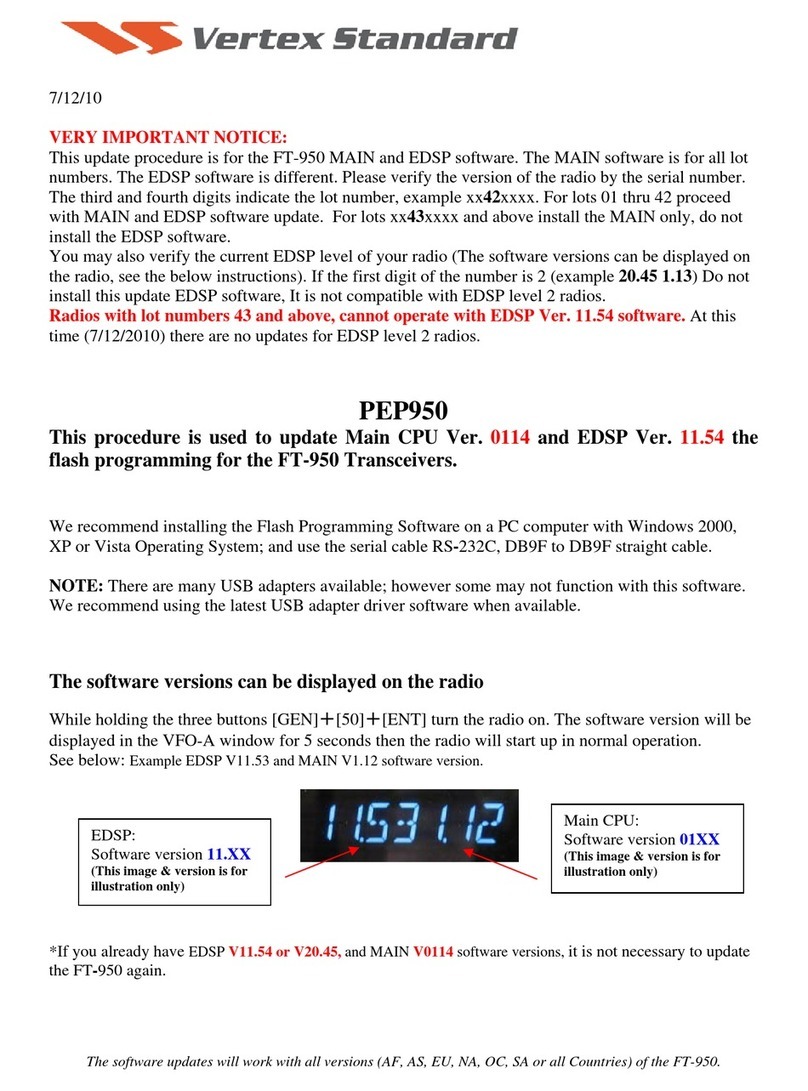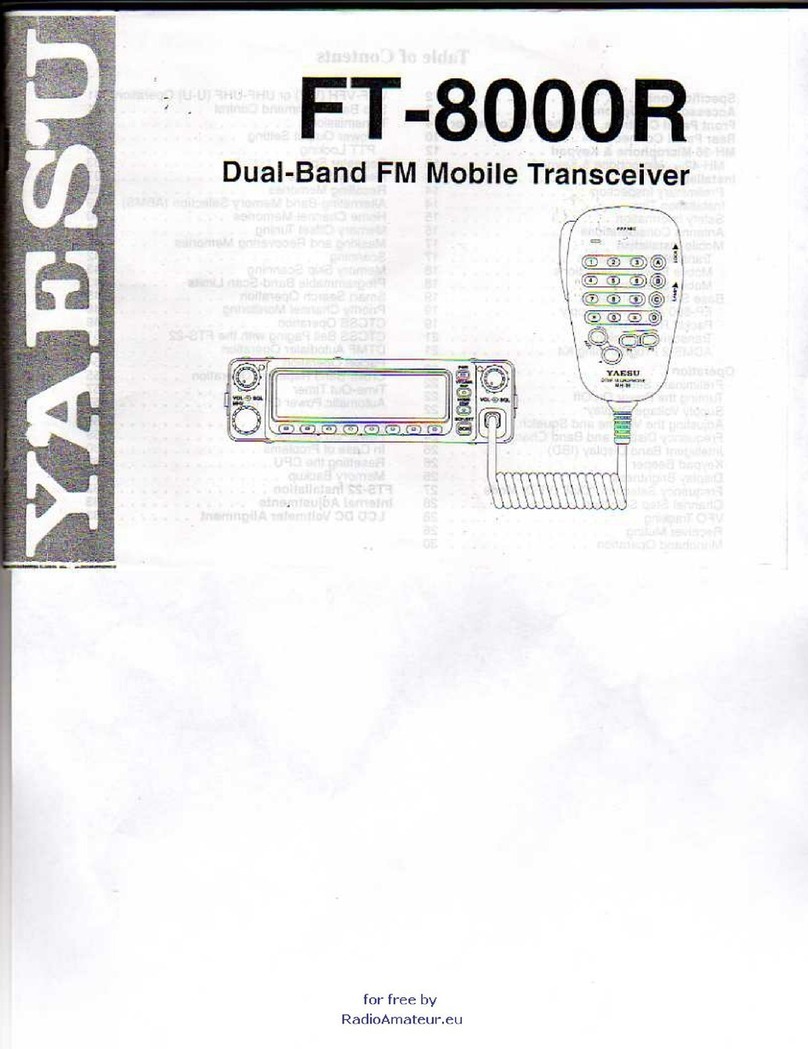Contents
FT-7900R Quick Reference Guide ................... i
Introduction ...................................................... 1
Specifications .................................................... 2
Accessories & Options ...................................... 3
Supplied Accessories ..................................... 3
Optional Accessories ...................................... 3
Installation ........................................................ 4
Preliminary Inspection ................................... 4
Installation Tips .............................................. 4
Safety Information .......................................... 5
Antenna Considerations ................................. 6
Mobile Installation ......................................... 8
Mobile Power Connections ........................ 9
Mobile Speakers ......................................... 9
Base Station Installation .......................... 10
AC Power Supplies .................................. 10
Packet Radio Terminal Node Controller ..... 10
Front Panel Controls & Switches .................. 12
Side Panel Connection & Knob ..................... 14
LCD .............................................................. 14
Rear Panel Connections ................................. 15
MH-48A6J Microphone ................................... 16
MH-42B6JS Microphone .................................. 18
Basic Operation .............................................. 20
Turning the Transceiver On and Off ............ 20
Adjusting the Audio Volume Level and
Squelch Setting ........................................ 20
Selecting the Operating Band ....................... 20
Frequency Navigation .................................. 21
Transmission ................................................ 22
Changing the Transmitter Power Level ... 22
Advanced Operation ...................................... 23
Lock Feature ................................................. 23
Keyboard Beeper .......................................... 23
Display Brightness ....................................... 24
RF Squelch ................................................... 24
Channel Step Selection ................................ 25
Receiving Mode Selection ........................... 25
Repeater Operation ........................................ 26
Repeater Shifts ............................................. 26
Automatic Repeater Shift (ARS) .................. 26
Manual Repeater Shift Activation ................ 27
Changing the Default Repeater Shift ....... 27
CTCSS/DCS Operation .................................. 28
CTCSS Operation ......................................... 28
DCS Operation ............................................. 29
Tone Search Scanning .................................. 30
Split Tone Operation .................................... 31
Memory Operation ......................................... 32
Regular Memory Channel Operation ........... 33
Memory Storage ....................................... 33
To Append an Alpha-numeric “Tag”
to a Memory ......................................... 33
Storing Independent
Transmit Frequencies (“Odd Splits”) ..... 34
Memory Recall ......................................... 35
Memory Offset Tuning ............................ 35
Deleting Memories ................................... 36
HOME Channel Memory ......................... 36
Memory Bank Operation ......................... 38
Memory Only Mode ................................. 39
Hyper Memory Channel Operation .............. 40
Hyper Memory Storage ............................ 40
Hyper Memory Recall .............................. 40
Weather Broadcast Channel Operation ........ 41
Scanning .......................................................... 42
Setting the Scan-Resume Technique ............ 42
VFO Scanning .............................................. 43
Memory Scanning ........................................ 44
How to Skip (Omit) a Channel
During Memory Scan Operation .............. 44
Preferential Memory Scan ....................... 45
Memory Bank Scan .................................. 46
Weather Alert Scan .................................. 46
Programmable (Band Limit) Memory Scan .... 47
“Priority Channel” Scanning (Dual Watch) .... 48
VFO Priority ............................................ 48
Memory Priority ....................................... 48
HOME Priority ......................................... 48
WX Priority .............................................. 49
Priority Revert Mode ............................... 49
Smart Search ................................................... 50
ARTSTM:
Auto Range Transponder System
...... 52
Basic ARTS Setup and Operation ................ 52
ARTS Polling Time Options ........................ 53
ARTS Alert Beep Option ............................. 53
CW Identifier Setup ..................................... 54
DTMF Autodialer Operation ........................ 56
Internet Connection Feature ......................... 58
Miscellaneous Settings .................................... 60
Time-Out Timer ........................................... 60
Automatic Power Off ................................... 60
MIC Gain Control ........................................ 61
Programming the Key Assignment .............. 62
DCS Code Inversion .................................... 64
Reset Procedure .............................................. 65
Cloning ............................................................ 66
Menu (“Set”) Mode ........................................ 67
“Auto” Mode Preset Operating Parameters ... 78
